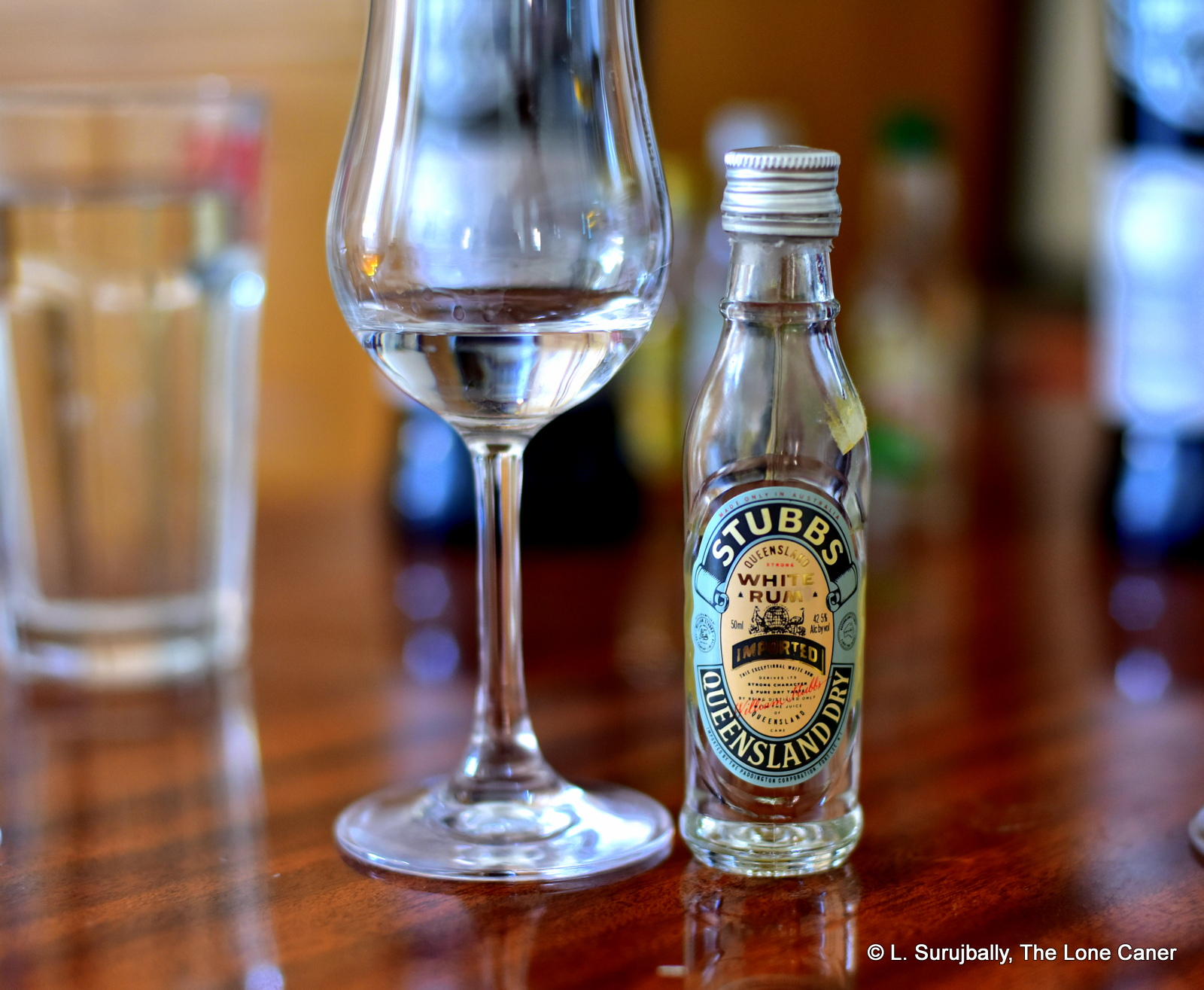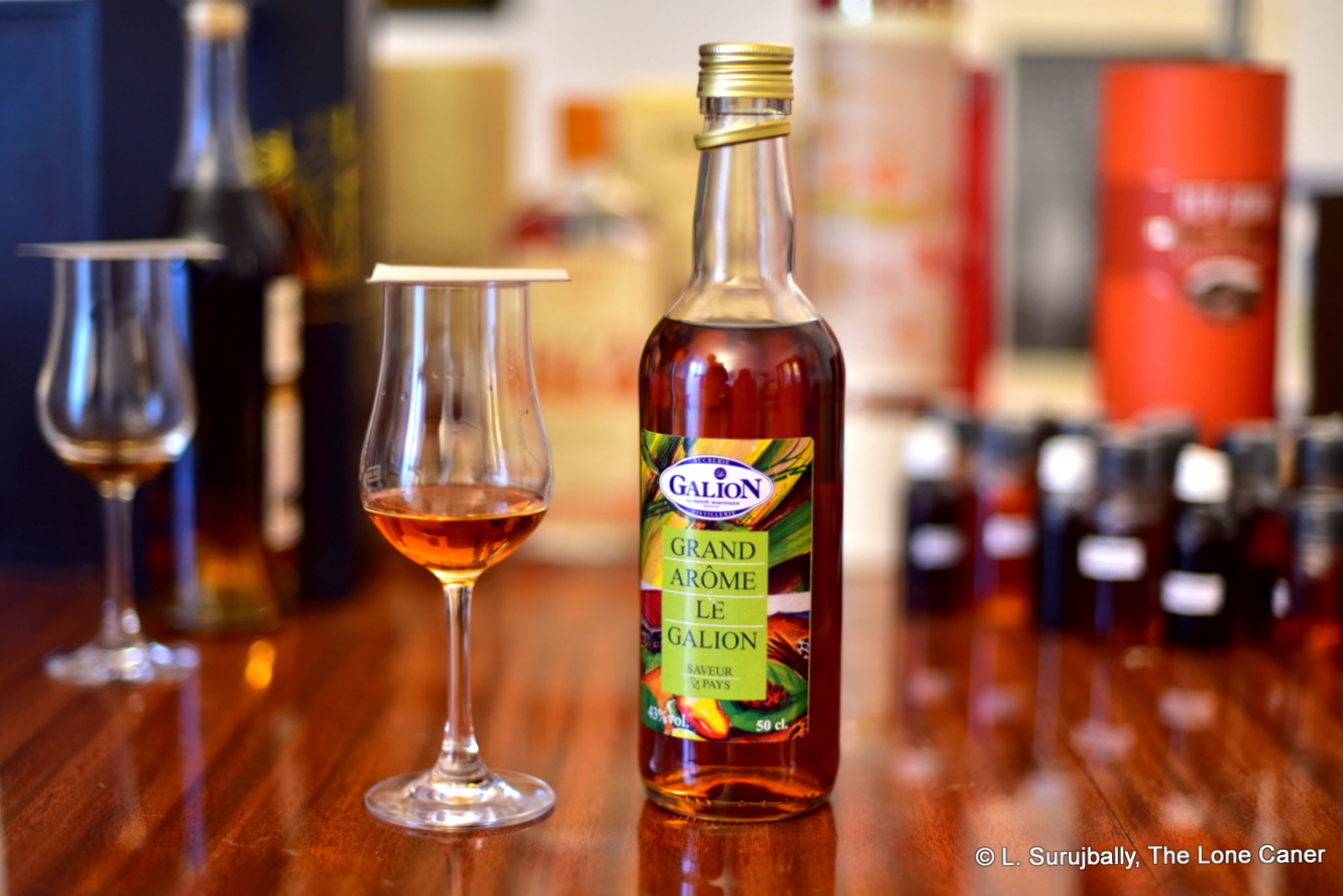
It was the words “Grand Arôme” that caught my eye: I knew that term. “Galion”, which I seemed to remember but didn’t, quite. And “Martinique,” hardly seeming to go with either. It had no brothers and sisters to its left and right on the shelf, which, in a shop stocking rows and rows of Plantations, Rum Nation, BBR, Saint James, Bally, HSE, Dillon, Neisson and all the others, struck me as strange (that and the rather “poor-relation-from-the-backcountry” cheap label and tinfoil cap). What on earth was this thing?
I bought it on a whim and cracked it in the company of some other agricoles that night and did not one lick of research until after it was done: that was probably the right decision, going in blind like that, because here is a rum which lurks behind the Martinique canon the same way the bottle did on that shelf, and it’s rare enough these days to find a rum you didn’t know existed, especially from an island with so many different rhums of its own that are well known.
Rums and rhums titled “Grand Arôme” are high-ester products much associated with French island rhums in general (Reunion Island’s Savanna HERR in particular) and have a lot in common with the New Wave of Jamaican rums we’re currently seeing from Hampden, Worthy Park and others, with their own classification titles like Plummer, Wedderburn and Continental Flavoured. They are all branches from the same tree – hooches with boosted ester counts to make for a enormously flavourful product.
And you could sense that on the nose, which was one to drive Cyrano de Bergerac into conniption fits. It lacked the smooth warmth of an aged product, but whether it did or didn’t spend time sleeping in wood, it reeked like a white monster from Haiti, even at the low strength. Olives, brine, licorice, black pepper, some vanilla, prunes and pencil shavings were immediately noticeable, in a sort of delirious free-for-all for dominance, followed by a lessening intensity over time as it opened up and provided some secondary aromas of vanilla, bags of fleshy fruits (peaches, apricots, prunes, plums, citrus), very light caramel and some aromatic tobacco. Not entirely original, but very very pungent, which for a rum issued at 43% was quite impressive – it was certainly more interesting than the light Cuban-style San Pablo or milquetoast Dictador Best of 1977 I happened to have on hand. Actually, that smell it reminded me rather less of an agricole than of a Jamaican, with all the funk and rotten bananas and midden heaps (akin to the Long Pond TECC but nowhere near as intense).
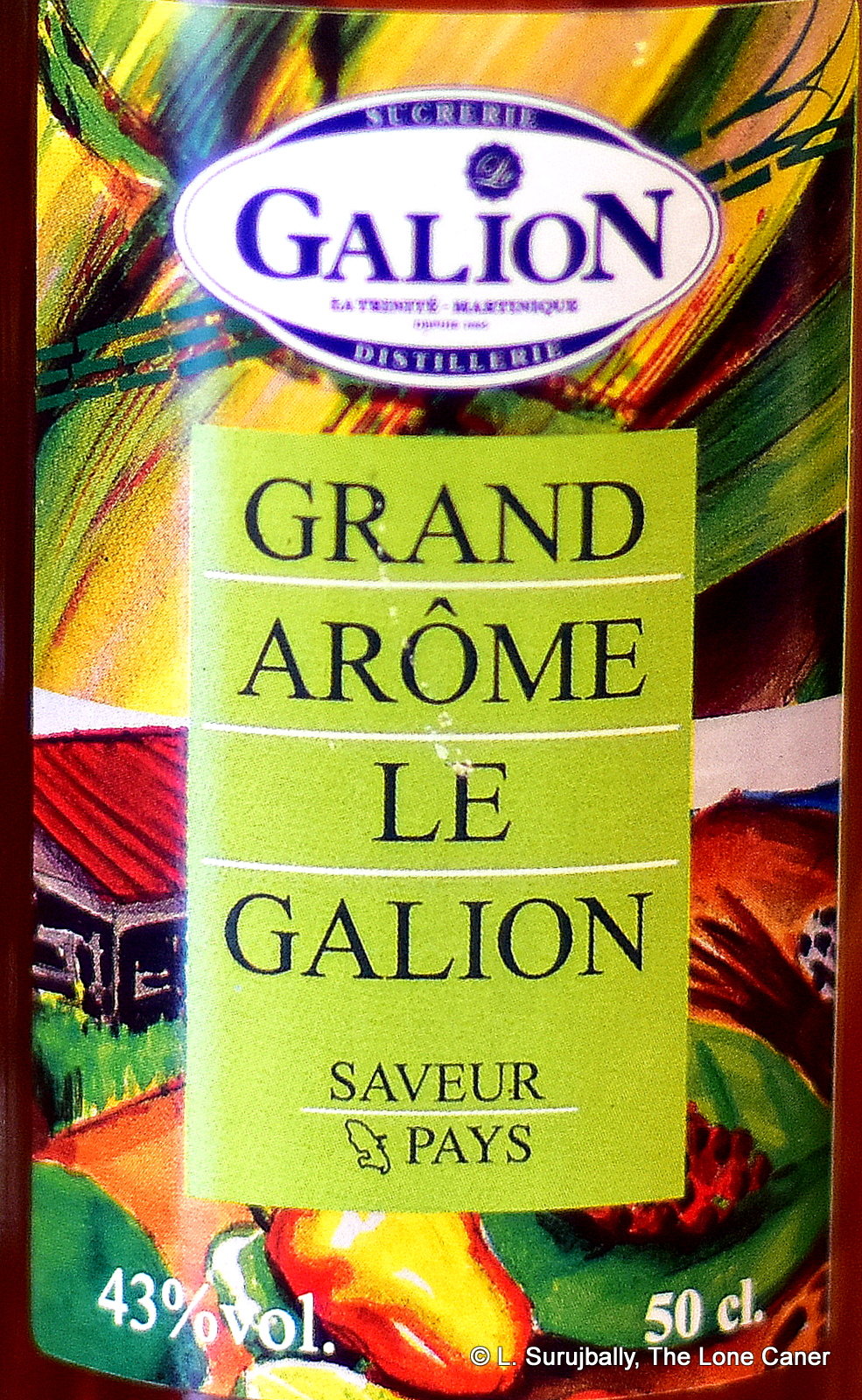 The pattern repeated itself as I tasted it, starting off sharp, uncouth, jagged, raw…and underneath all that was some real quality. There were caramel, salty cashews, marshmallows, brown sugar (truly an agricole? I wrote in my notes), plasticine, wax crayons, brine, olives, sugar water, pineapple, raisins, a solid citrus heft to it, and again a lot of varied ripe fruits (and some not so ripe that were just beginning to go off). It was kind of sweet and salt and sour all at once – practically a roadmap to the esters it squirted from every pore. But what was nice about it, was that if left to rest, it turned out to be smooth enough to sip while retaining that edge of raw quality that would make it a great mixer, and it’s got all the character of profile which the San Pablo (both the Gold and the White) so conspicuously lacked. Even the finish demonstrated that – it was short, but quite intense, with lingering notes of citrus, light anise, molasses, fruits, raisins and a last hint of salt.
The pattern repeated itself as I tasted it, starting off sharp, uncouth, jagged, raw…and underneath all that was some real quality. There were caramel, salty cashews, marshmallows, brown sugar (truly an agricole? I wrote in my notes), plasticine, wax crayons, brine, olives, sugar water, pineapple, raisins, a solid citrus heft to it, and again a lot of varied ripe fruits (and some not so ripe that were just beginning to go off). It was kind of sweet and salt and sour all at once – practically a roadmap to the esters it squirted from every pore. But what was nice about it, was that if left to rest, it turned out to be smooth enough to sip while retaining that edge of raw quality that would make it a great mixer, and it’s got all the character of profile which the San Pablo (both the Gold and the White) so conspicuously lacked. Even the finish demonstrated that – it was short, but quite intense, with lingering notes of citrus, light anise, molasses, fruits, raisins and a last hint of salt.
My initial scribbles, transcribed here verbatim, read “Can’t tell what this is, need more background work. Says from Martinique, but it backs away from the crisp/clean agricole party line; seems more like a Jamaica-Martinique stepchild?” (Yeah, I really do write like that). Because to me, it presented as a hybrid at the very least, suggesting intriguing paths for rum makers – a combination of agricole and molasses rum, made perhaps en passant, but certainly not lacking in brio, aggro or tempo.
So what is it? A local rum made for the backcountry and not for export? A trial balloon of sorts to suss out the market? A failed attempt at something different, an experiment that somehow got loose from the lab? A bottle of the chairman’s private stash that got smuggled out in someone’s trousers?
Not quite. It’s Martinique’s answer to the Jamaican bad boys, made by the last remaining sugar factory on Martinique, Usine du Galion, which has the added distinction of also being the last distillery on the island to make rum from molasses (they source cane from around the island, from areas not AOC labelled). It’s mystifying why there’s such a lack of awareness of the Galion rum itself, but on reflection it’s perhaps not so surprising, because — according to the estimable Benoit Bail and Jerry Gitany who I contacted about this odd lack of profile — the commercial bottled rum is peanuts to them. Their real core business is sugar, and that part of the operation is huge, their primary focus. They installed a column still in the factory to make rum in bulk, which is then almost all exported to Europe, used primarily in the tobacco/candy/pastry industries and pharmaceuticals (probably perfumes).
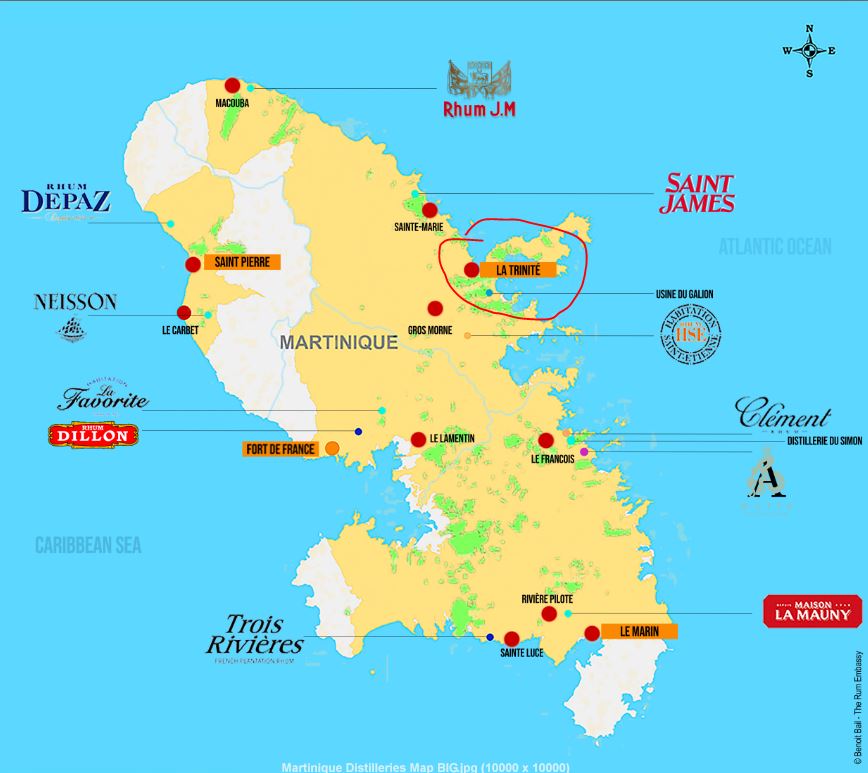
Map of Martinique distilleries courtesy of Benoit Bail
There are only two Galion rums I’m aware of at this point: a white I’ve never seen at around 50-55%, and this one at 43%, which, according to Nico Rumlover’s enormously informative article here, is made from molasses, fermented with the addition of vinasse for anything between eight to sixteen days in wooden vats, using indigenous yeasts in a continuous cycle through the columnar still. Apparently it is unaged, with a small amount of caramel added to give the brown colour and generally limited to the ester midrange of around 500 g/hlpa – squarely in the no-man’s land between Wedderburn (200-300 g/hlpa) and Continental Flavoured (700-1600 g/hlpa).
And it’s a hell of a rum, I’ll tell you that – Matt Pietrek in his article on “Beyond Jamaican Funk” mentioned Galion and what they were up to, but missed this under-the-radar rum and suggested that if you wanted French Island ester bombs, Reunion was the place to go. You might still have to, since the Galion is either available only at the factory, as a blender’s sample from Scheer in Amsterdam (at a whopping 61% ABV), or in some small, dusty forgotten shelf somewhere in Europe. But if you can pick it up, think of it as a high ester funk bomb that could be seen as a cheerfully insouciant French bird flipped at Jamaica; it proves emphatically that you don’t need to go all the way to the Indian Ocean to get yourself some, and provides a really cool comparator to those flavourful rums from all the other places we are only now getting to know so well.
(#569)(85/100)
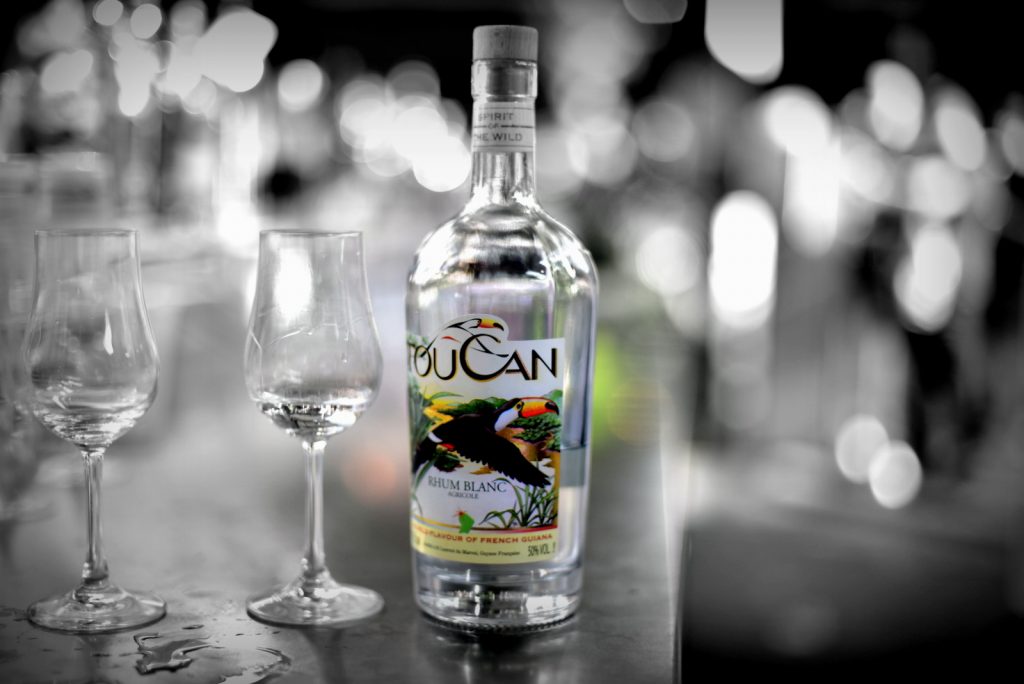
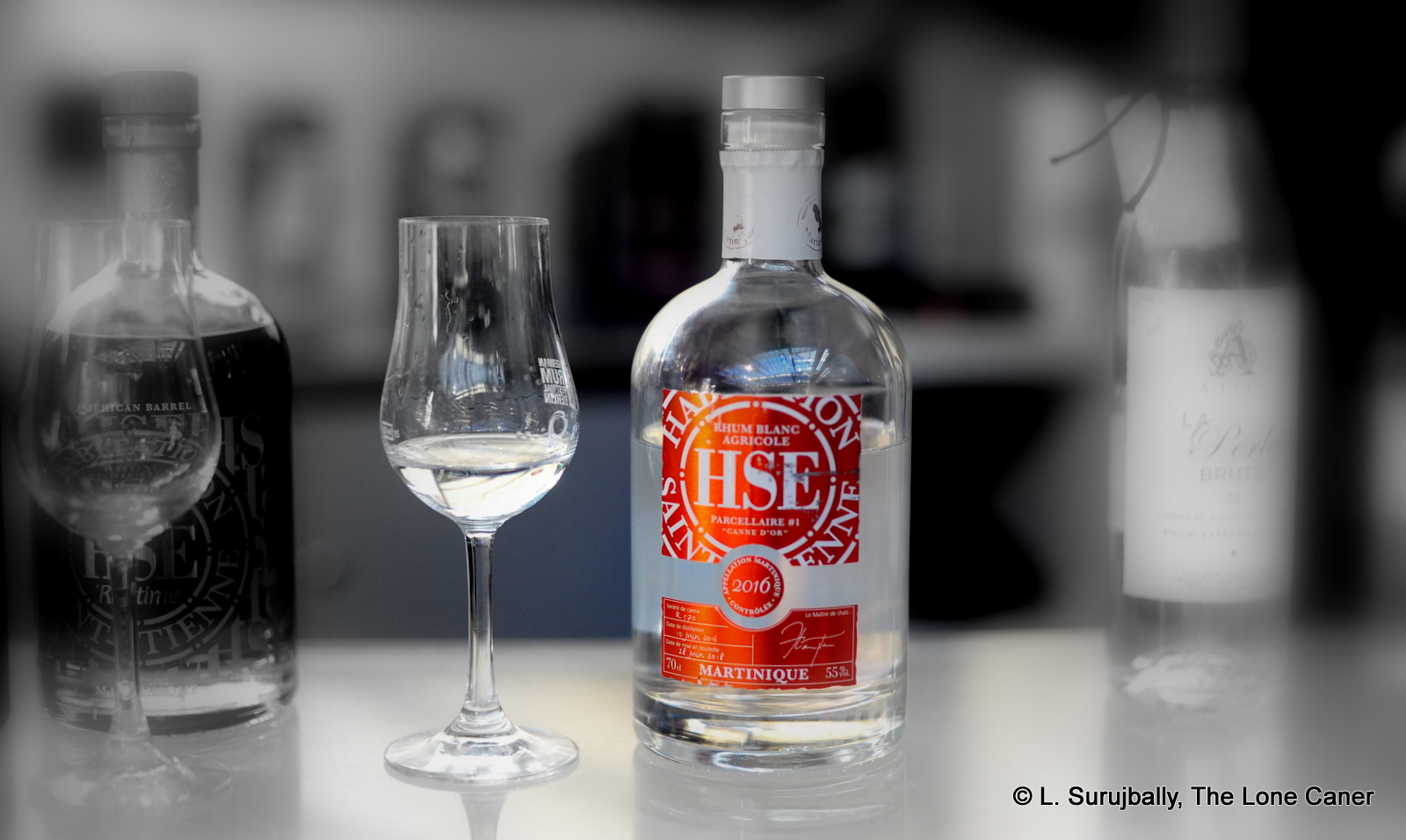
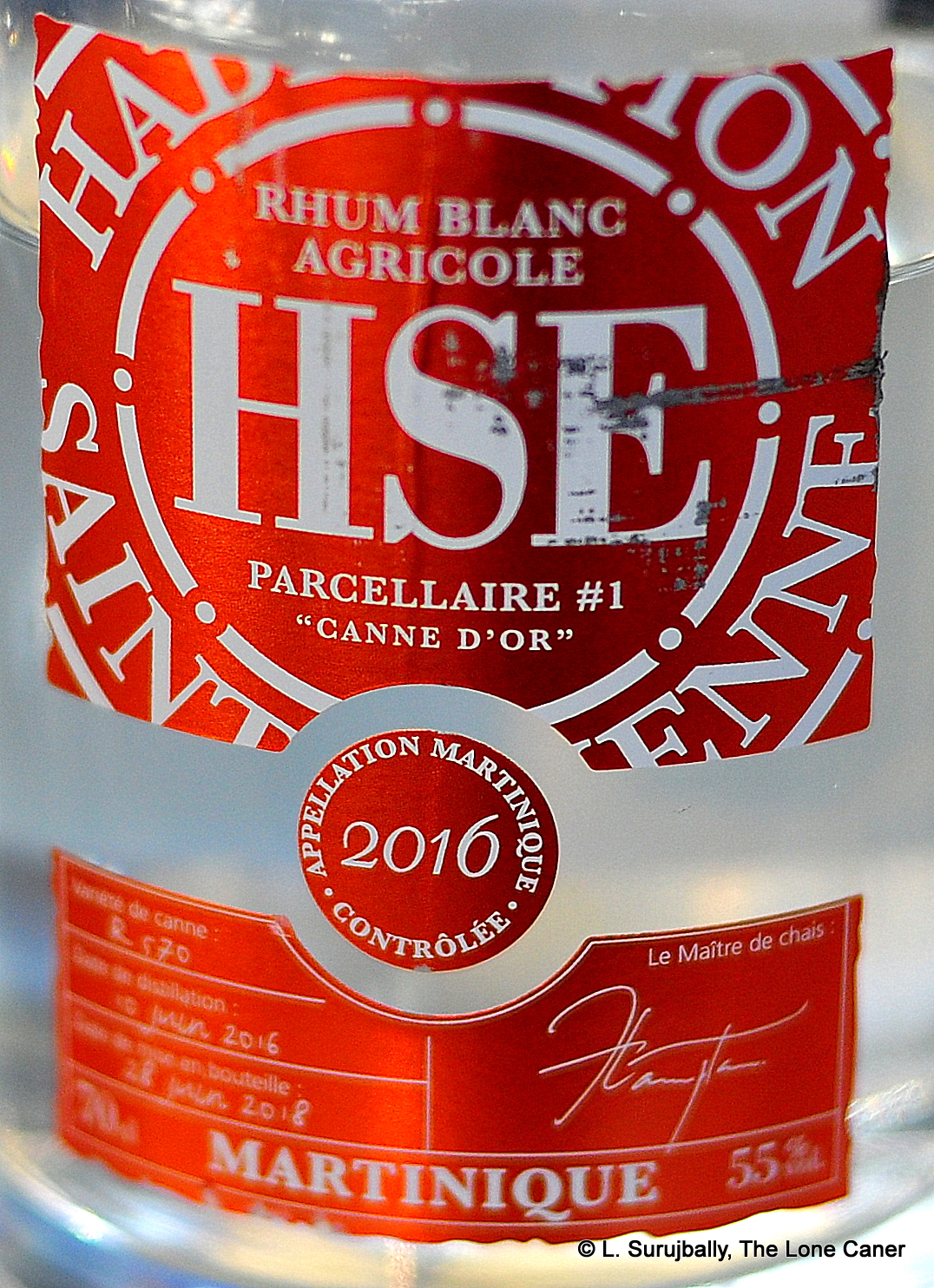
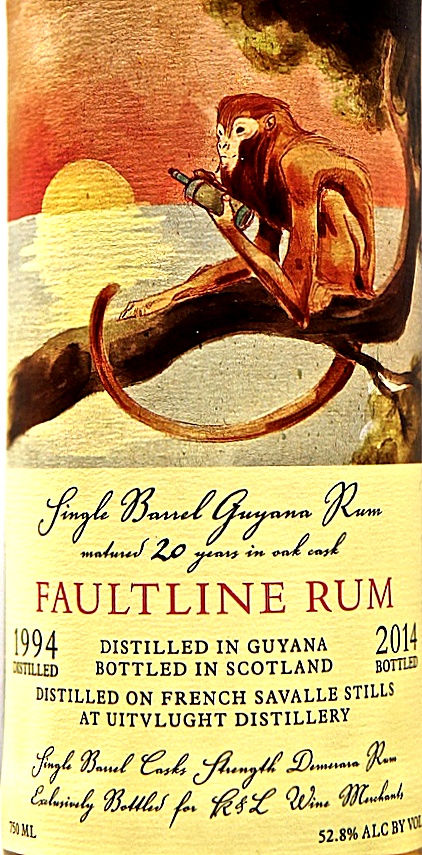
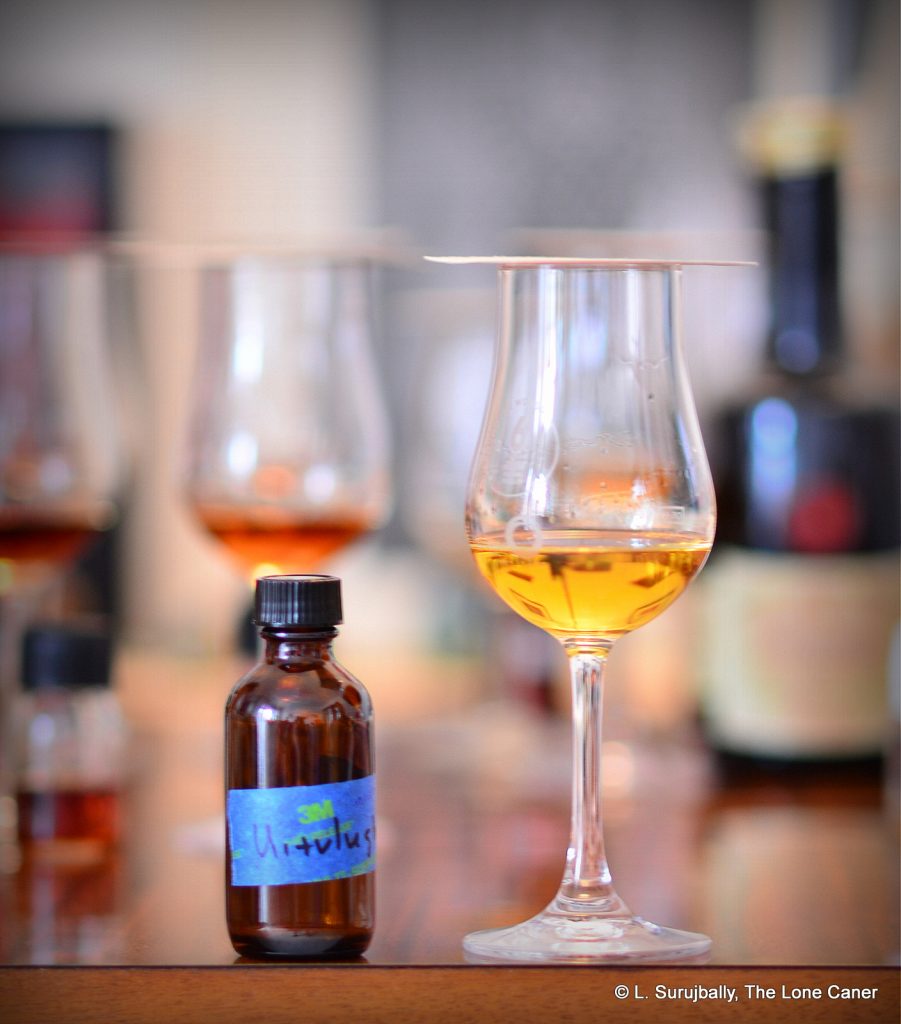
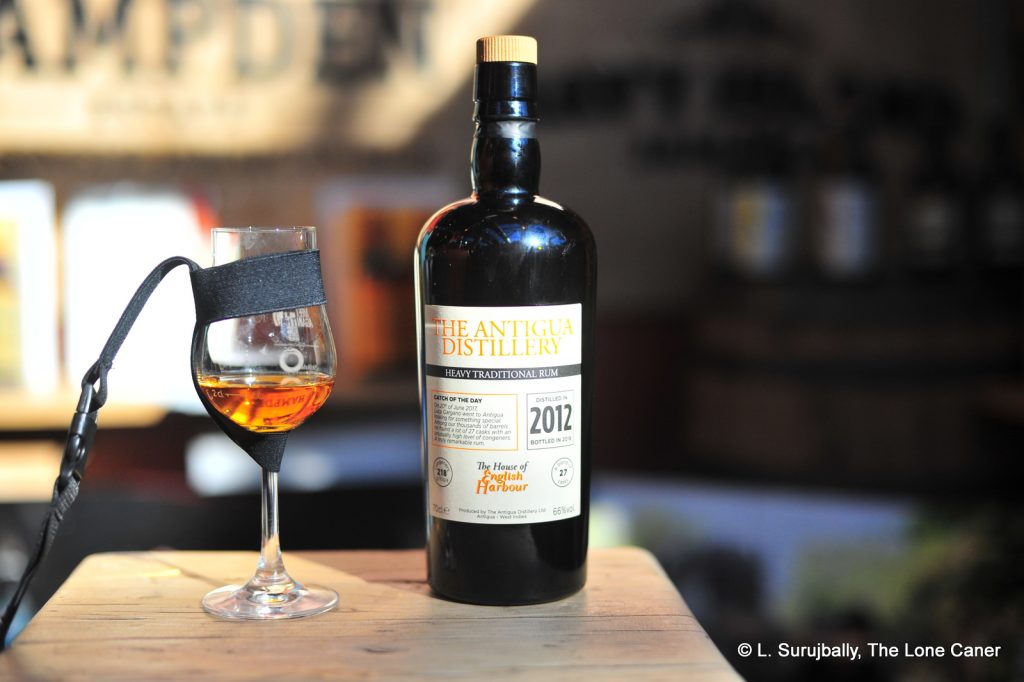
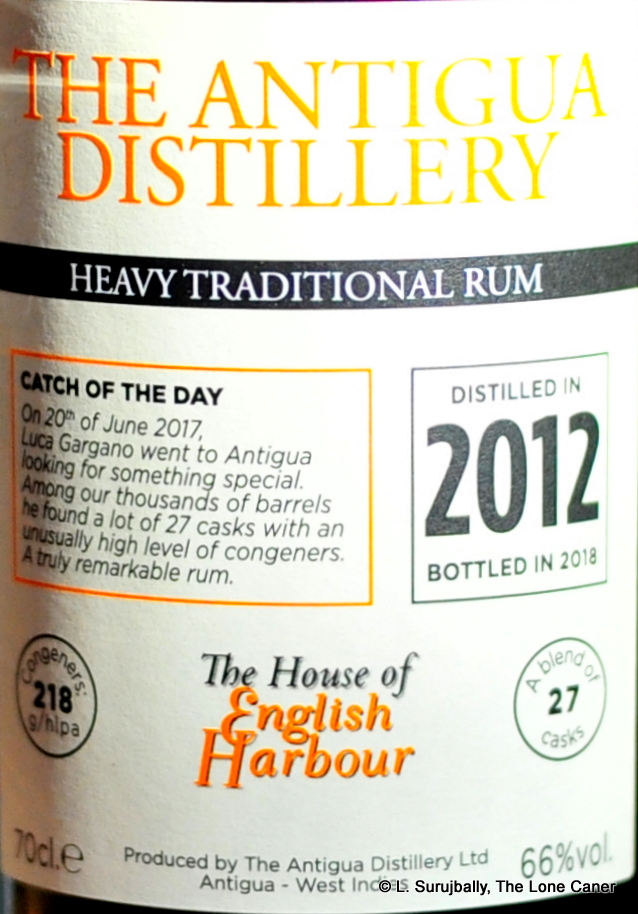 To be honest, the initial nose reminds me rather more of a Guyanese Uitvlugt, which, given the still of origin, may not be too far out to lunch. Still, consider the aromas: they were powerful yet light and very clear – caramel and pancake syrup mixed with brine, vegetable soup, and bags of fruits like raspberries, strawberries, red currants. Wrapped up within all that was vanilla, cinnamon, cloves, cumin, and light citrus peel. Honestly, the assembly was so good that it took effort to remember it was bottled at a hefty 66% (and wasn’t from Uitvlugt).
To be honest, the initial nose reminds me rather more of a Guyanese Uitvlugt, which, given the still of origin, may not be too far out to lunch. Still, consider the aromas: they were powerful yet light and very clear – caramel and pancake syrup mixed with brine, vegetable soup, and bags of fruits like raspberries, strawberries, red currants. Wrapped up within all that was vanilla, cinnamon, cloves, cumin, and light citrus peel. Honestly, the assembly was so good that it took effort to remember it was bottled at a hefty 66% (and wasn’t from Uitvlugt).

 The pattern repeated itself as I tasted it, starting off sharp, uncouth, jagged, raw…and underneath all that was some real quality. There were caramel, salty cashews, marshmallows, brown sugar (
The pattern repeated itself as I tasted it, starting off sharp, uncouth, jagged, raw…and underneath all that was some real quality. There were caramel, salty cashews, marshmallows, brown sugar (
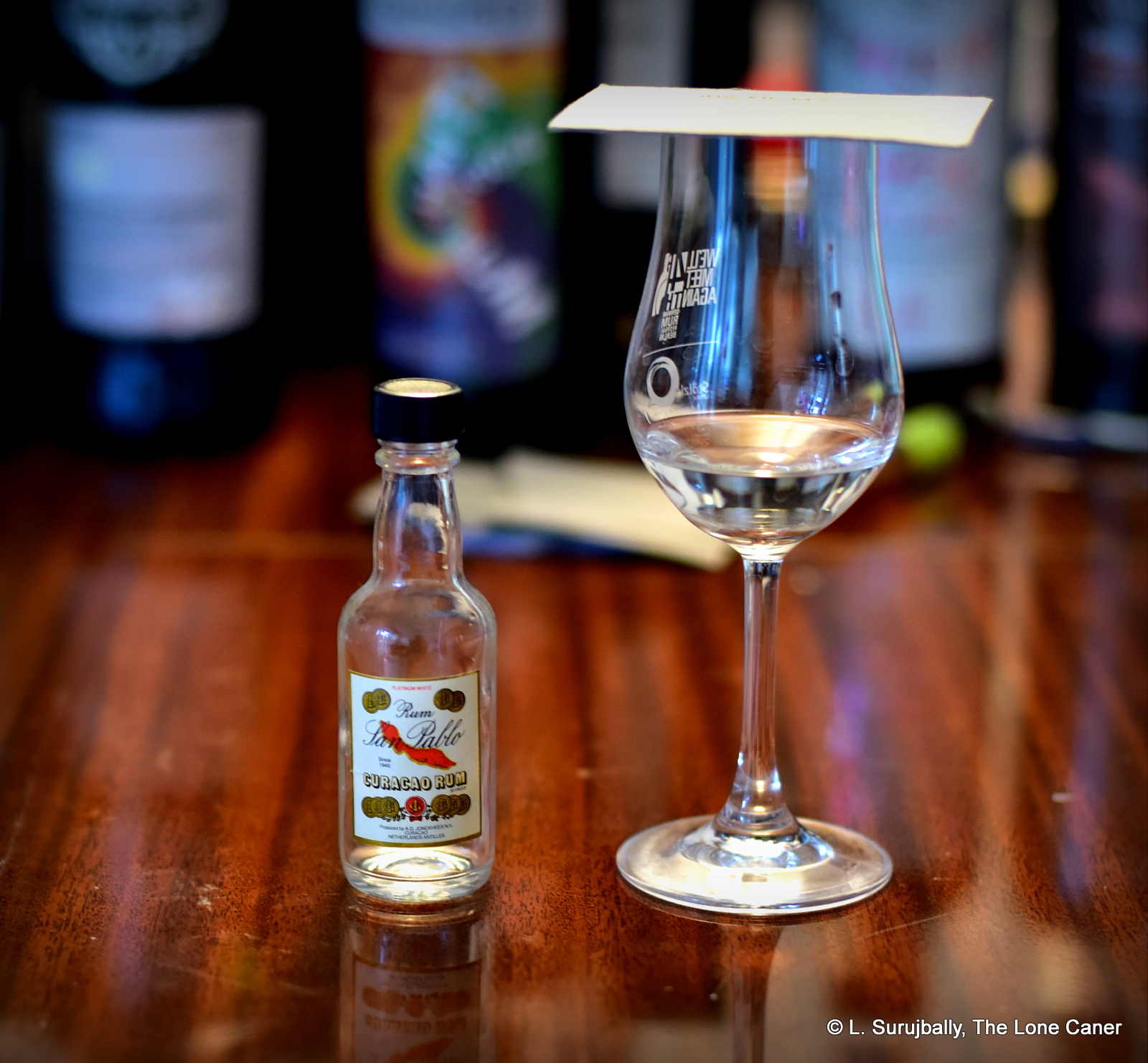
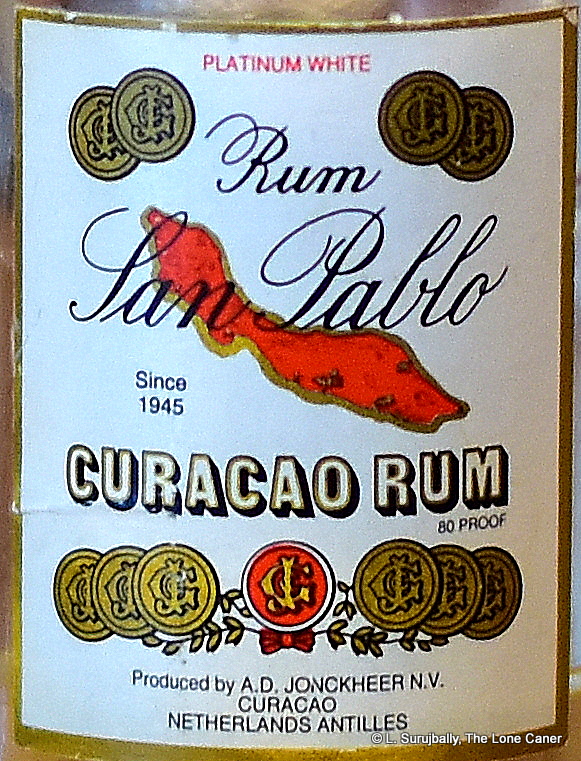 And that creates a rum of uncommon docility. In fact, it’s close to being the cheshire cat of rums, so vaguely does it present itself. The soft silky nose was a watery insignificant blend of faint nothingness. Sugar water – faint; cucumbers – faint; cane juice – faint; citrus zest – faint (in fact here I suspect the lemon was merely waved rather gravely over the barrels before being thrown away); some cumin, and it’s possible that some molasses zipped past my nose, too fast to be appreciated.
And that creates a rum of uncommon docility. In fact, it’s close to being the cheshire cat of rums, so vaguely does it present itself. The soft silky nose was a watery insignificant blend of faint nothingness. Sugar water – faint; cucumbers – faint; cane juice – faint; citrus zest – faint (in fact here I suspect the lemon was merely waved rather gravely over the barrels before being thrown away); some cumin, and it’s possible that some molasses zipped past my nose, too fast to be appreciated. 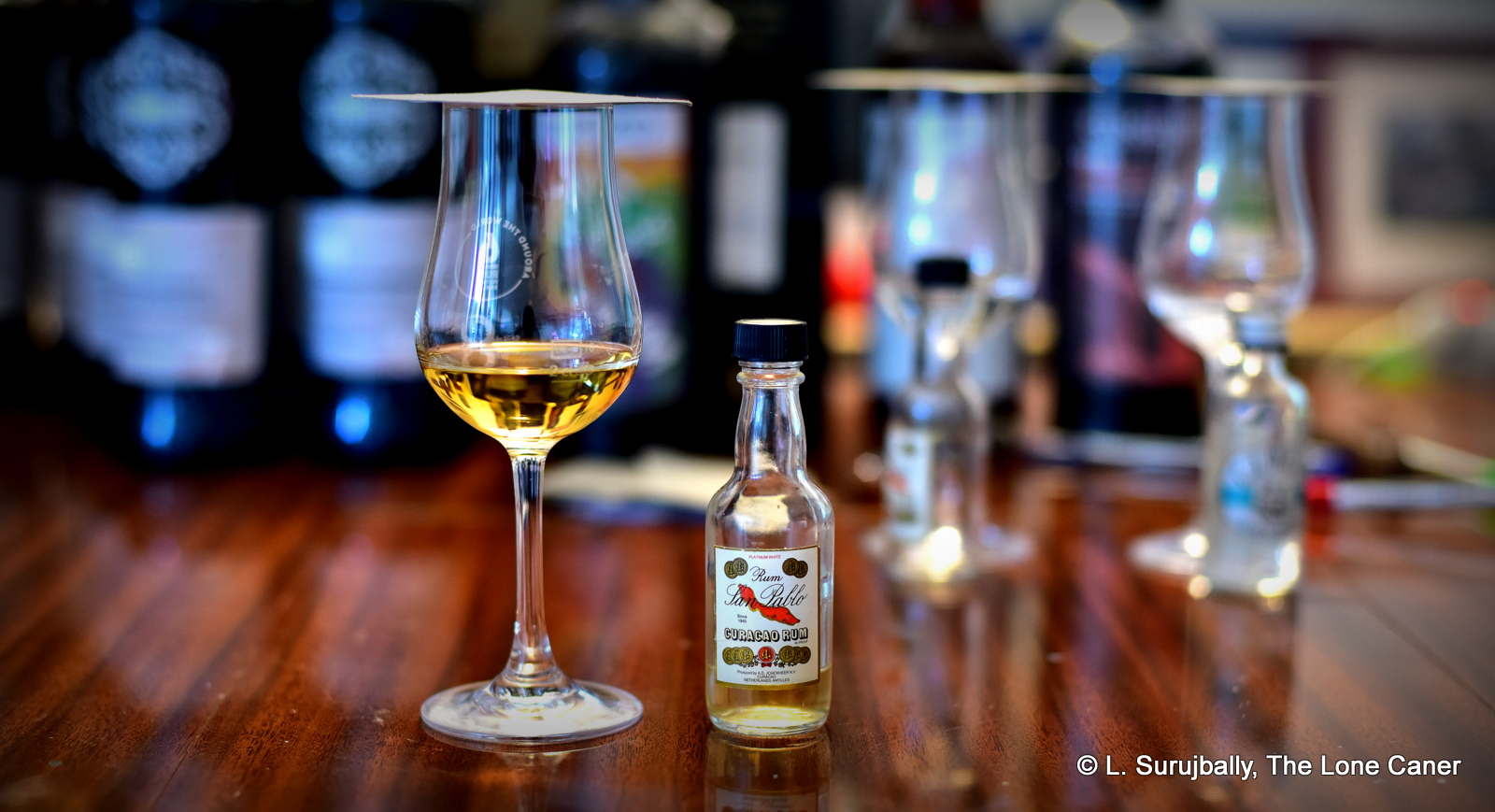
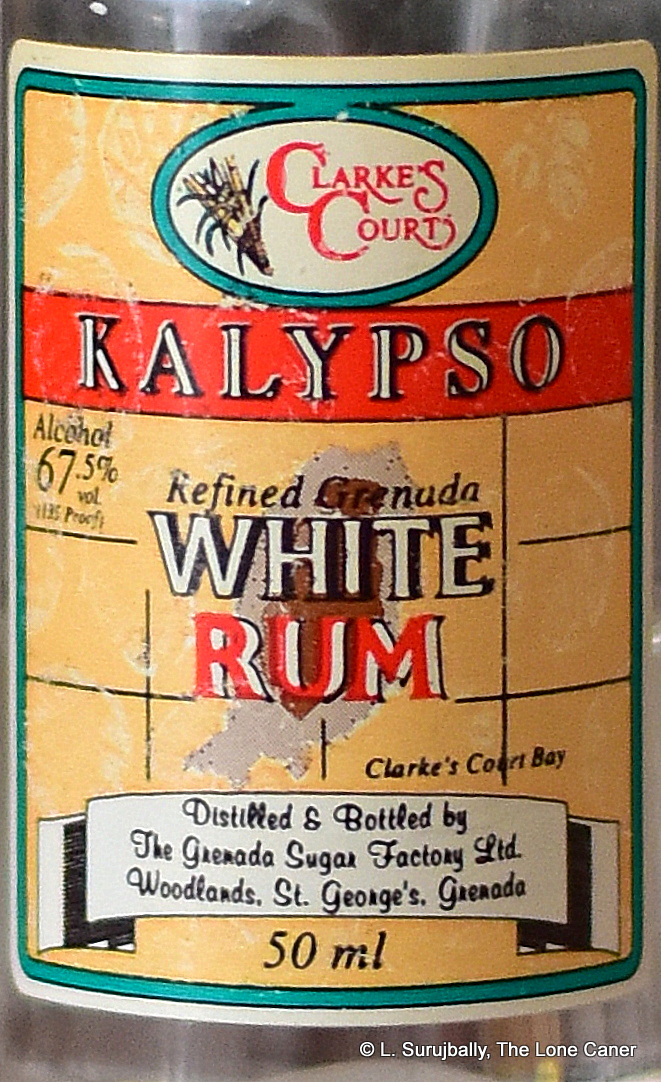
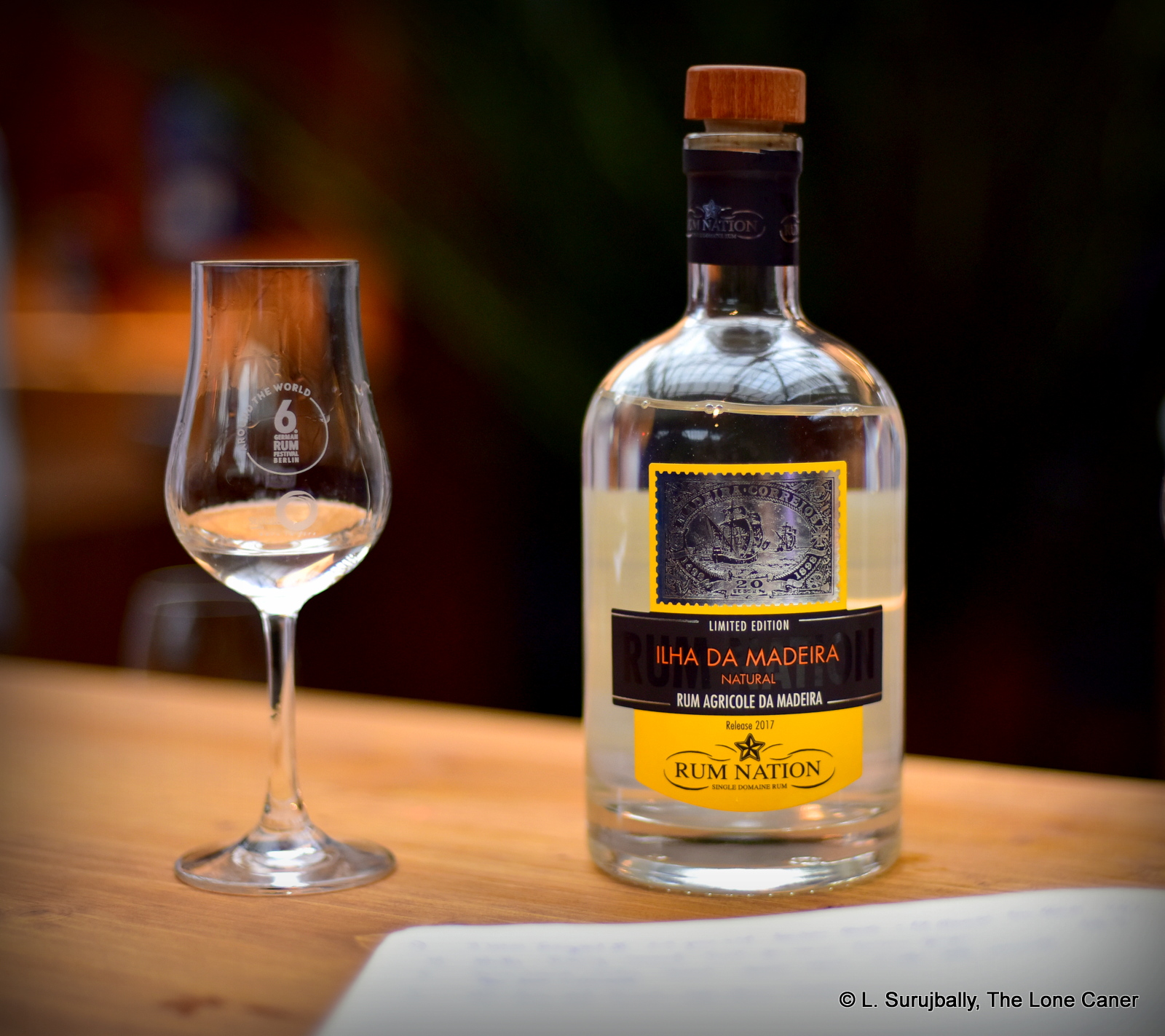
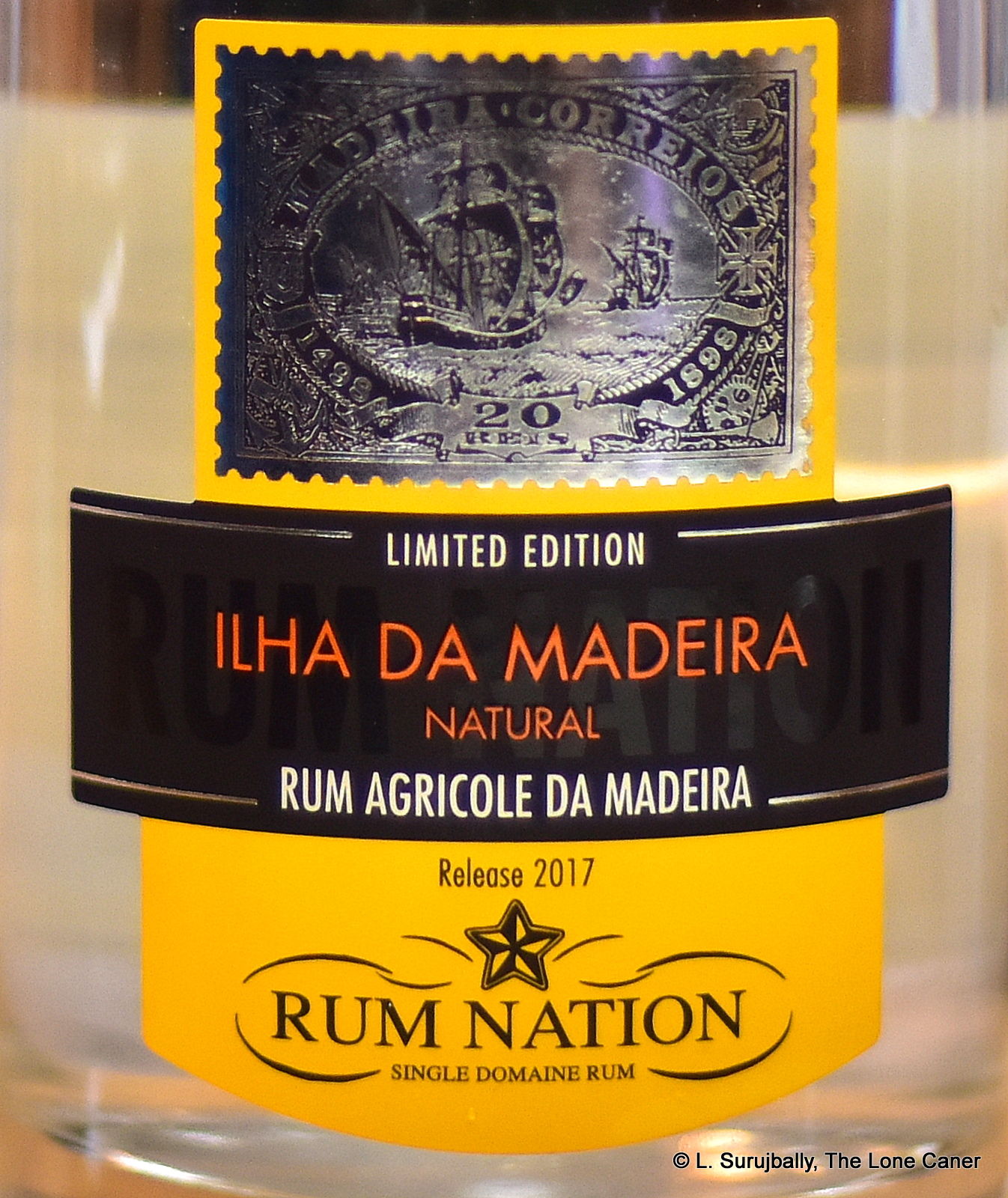 Anyway, here’s what it was like. The nose of the Ilha da Madeira fell somewhere in the middle of the line separating a bored “meh” from a more disbelieving “holy-crap!”. It was a light melange of a playful sprite-like aroma mixed in with more serious brine and olives, a little sweet, and delicate – flowers, sugar water, grass, pears, guavas, mint, some marzipan. You could sense something darker underneath – cigarette tar, acetones – but these never came forward, and were content to be hinted at, not driven home with a sledge. Not really a brother to that fierce Jamaican brawler, more like a cousin, a closer relative to the
Anyway, here’s what it was like. The nose of the Ilha da Madeira fell somewhere in the middle of the line separating a bored “meh” from a more disbelieving “holy-crap!”. It was a light melange of a playful sprite-like aroma mixed in with more serious brine and olives, a little sweet, and delicate – flowers, sugar water, grass, pears, guavas, mint, some marzipan. You could sense something darker underneath – cigarette tar, acetones – but these never came forward, and were content to be hinted at, not driven home with a sledge. Not really a brother to that fierce Jamaican brawler, more like a cousin, a closer relative to the 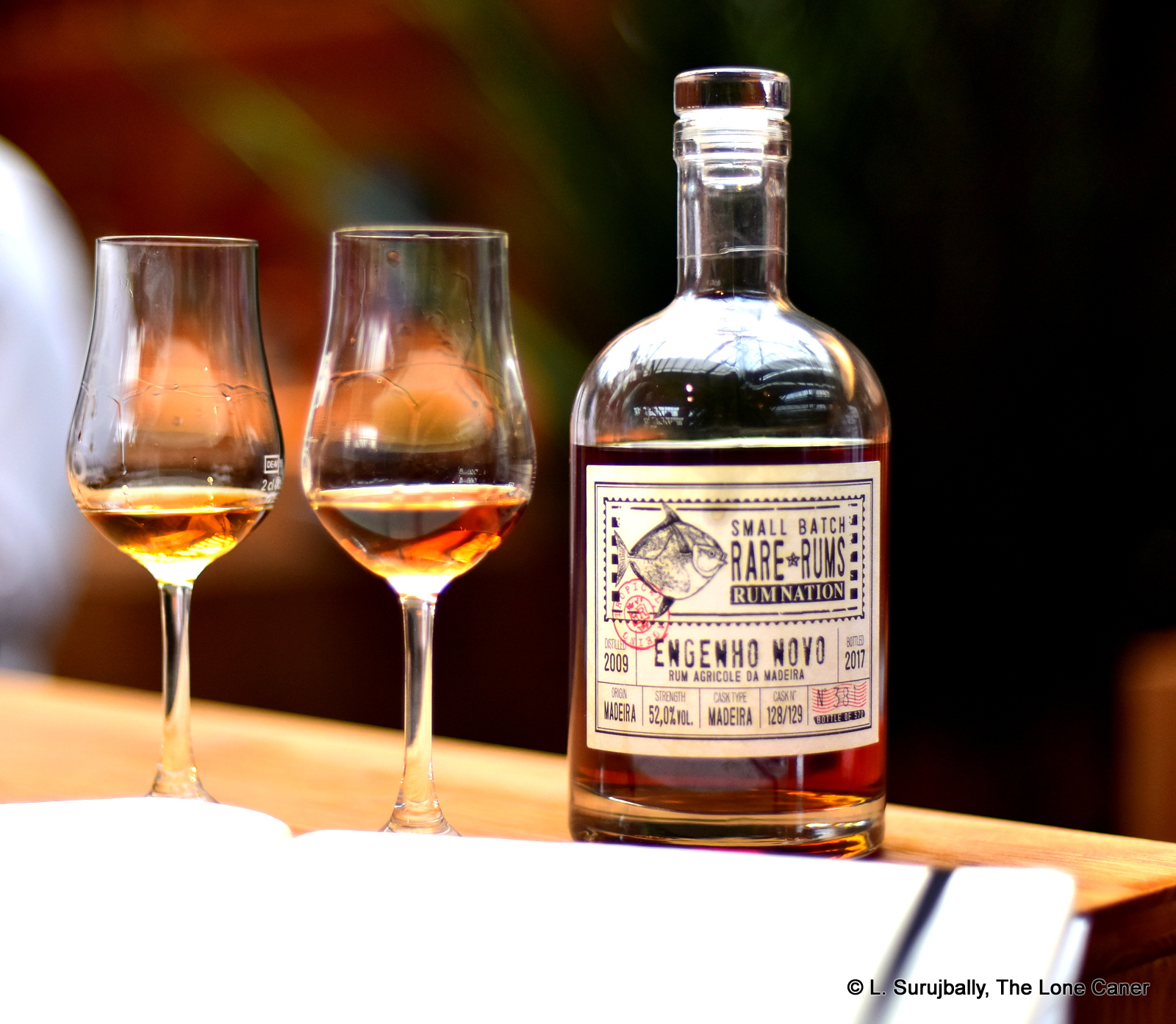
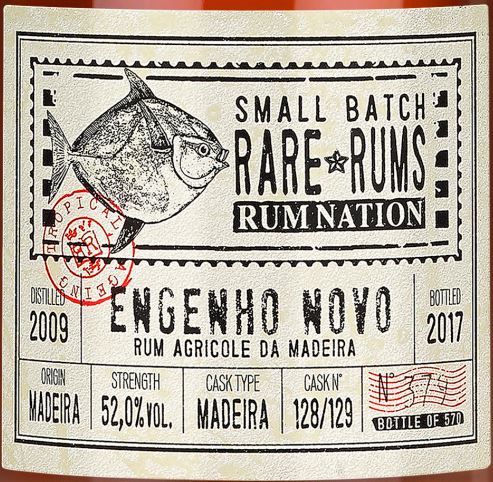 I’ll provide some more background detail in the Other Notes below, but for the moment let’s just read off the fact sheet for the rum which is very helpfully provided on the Rare Rums website and on the bottle label itself. This is a cane juice distillate and can therefore be classed as an agricole-style rhum; distilled 2009 and the four barrel outturn from a column still was aged in Madeira casks, providing 570 bottles in 2017, with a strength of 52%.
I’ll provide some more background detail in the Other Notes below, but for the moment let’s just read off the fact sheet for the rum which is very helpfully provided on the Rare Rums website and on the bottle label itself. This is a cane juice distillate and can therefore be classed as an agricole-style rhum; distilled 2009 and the four barrel outturn from a column still was aged in Madeira casks, providing 570 bottles in 2017, with a strength of 52%.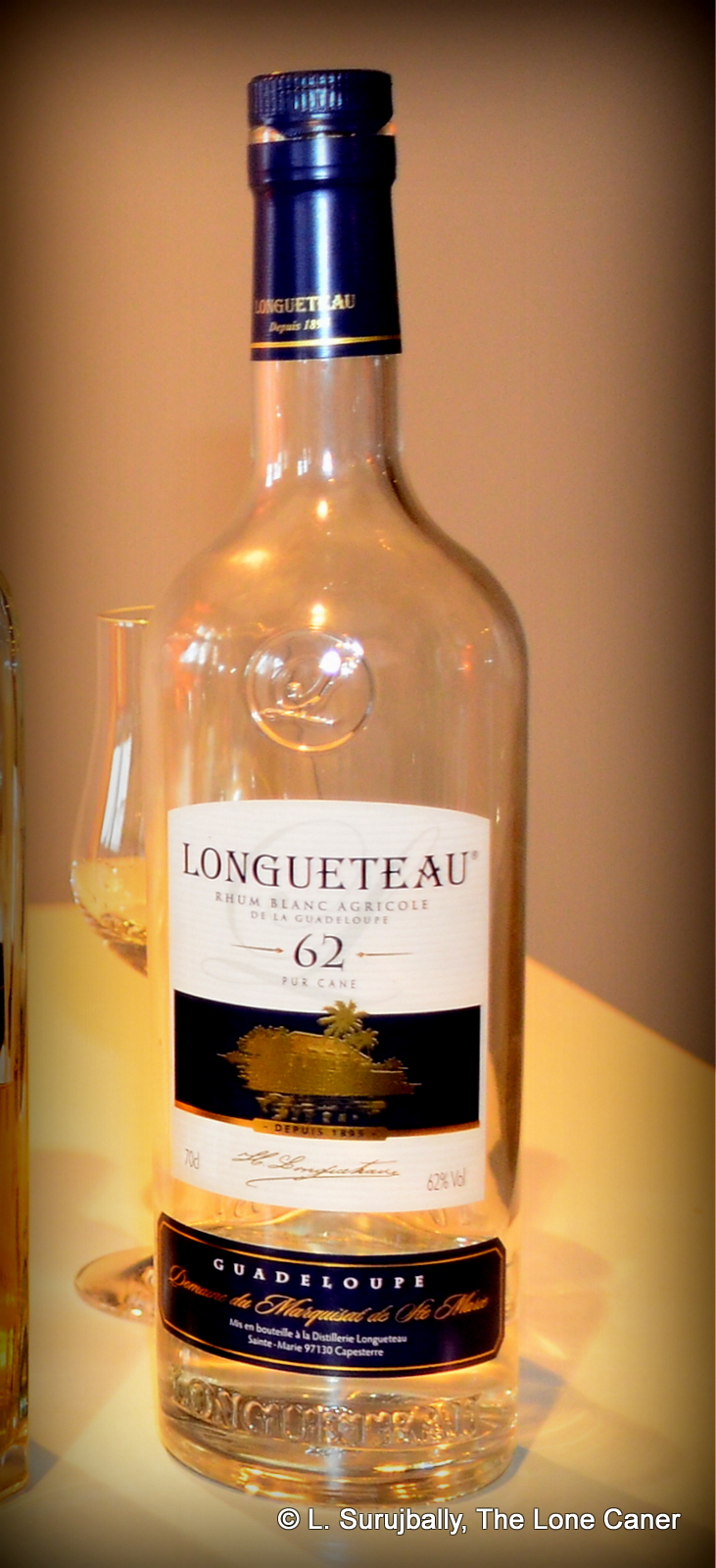 In the last decade, several major divides have fissured the rum world in ways that would have seemed inconceivable in the early 2000s: these were and are cask strength (or full-proof) versus “standard proof” (40-43%); pure rums that are unadded-to versus those that have additives or are spiced up; tropical ageing against continental; blended rums versus single barrel expressions – and for the purpose of this review, the development and emergence of unmessed-with, unfiltered, unaged white rums, which in the French West Indies are called
In the last decade, several major divides have fissured the rum world in ways that would have seemed inconceivable in the early 2000s: these were and are cask strength (or full-proof) versus “standard proof” (40-43%); pure rums that are unadded-to versus those that have additives or are spiced up; tropical ageing against continental; blended rums versus single barrel expressions – and for the purpose of this review, the development and emergence of unmessed-with, unfiltered, unaged white rums, which in the French West Indies are called 
 Aside from being made so long ago, what makes the 1924 special is that it was the initial release of an aged rhum from Bally, and one of the first of its kind in the French West Indies, if not
Aside from being made so long ago, what makes the 1924 special is that it was the initial release of an aged rhum from Bally, and one of the first of its kind in the French West Indies, if not 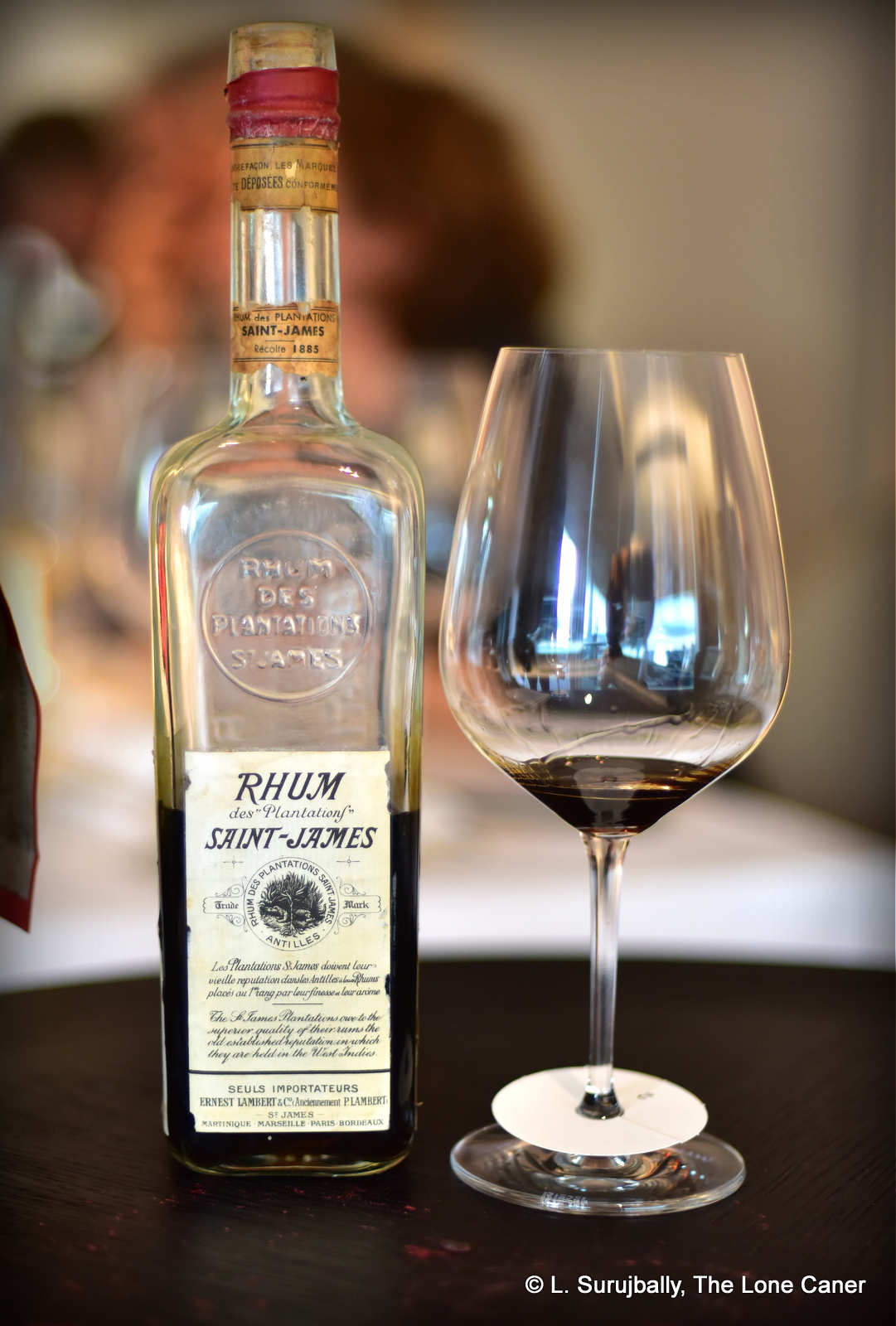
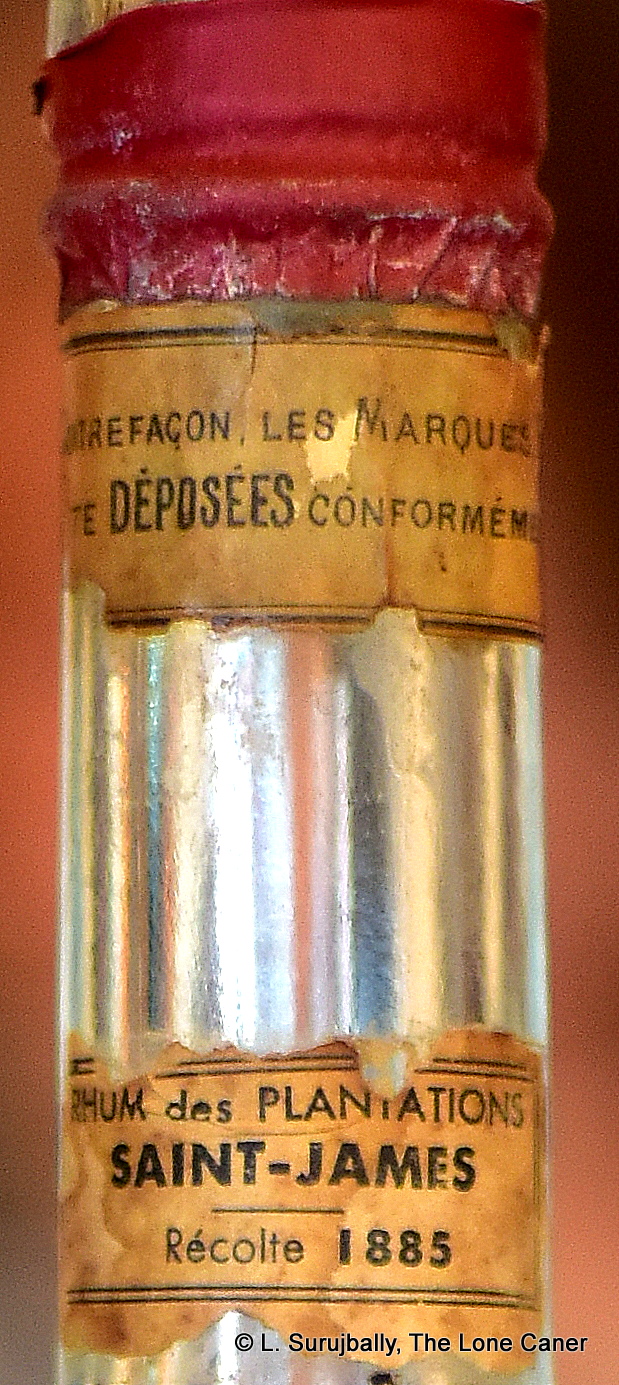 Still, we had to get facts, and a lot of our preliminary conversations and subsequent texts and messages revolved around the data points, which are as follows: the rhum was made in 1885 on Martinique, and derived from cane juice that was boiled prior to fermentation. Although the exact age is unknown, it was certainly shipped off the island before Mount Pelée erupted in 1902 and destroyed all stocks there, so at an absolute maximum it can be 17 years old. This is, however unlikely – few rums or rhums were aged that long back then, and the opinion of the master blender of St James (Mark Sassier) that it was 8-10 years old is probably the best one (
Still, we had to get facts, and a lot of our preliminary conversations and subsequent texts and messages revolved around the data points, which are as follows: the rhum was made in 1885 on Martinique, and derived from cane juice that was boiled prior to fermentation. Although the exact age is unknown, it was certainly shipped off the island before Mount Pelée erupted in 1902 and destroyed all stocks there, so at an absolute maximum it can be 17 years old. This is, however unlikely – few rums or rhums were aged that long back then, and the opinion of the master blender of St James (Mark Sassier) that it was 8-10 years old is probably the best one (

 The history of the Skeldon 1978 bottling from a long-dismantled Savalle still is an odd one: the plantation is on the far eastern side of Guyana and the distillery has been shut down since 1960, though the original sugar factory’s remains continue to moulder away there, now replaced by a modern white elephant. It’s possible that the Savalle still which made it was taken elsewhere (Uitvlugt is the unconfirmed suspect) and this distillate hails from there rather than Skeldon — but certainly the “SWR” barrels ended up at Diamond, where Luca saw them gathering dust in the warehouse and convinced Yesu Persaud (the chairman of DDL at the time) to part with them. The 4-barrel 544-bottle outturn of the
The history of the Skeldon 1978 bottling from a long-dismantled Savalle still is an odd one: the plantation is on the far eastern side of Guyana and the distillery has been shut down since 1960, though the original sugar factory’s remains continue to moulder away there, now replaced by a modern white elephant. It’s possible that the Savalle still which made it was taken elsewhere (Uitvlugt is the unconfirmed suspect) and this distillate hails from there rather than Skeldon — but certainly the “SWR” barrels ended up at Diamond, where Luca saw them gathering dust in the warehouse and convinced Yesu Persaud (the chairman of DDL at the time) to part with them. The 4-barrel 544-bottle outturn of the 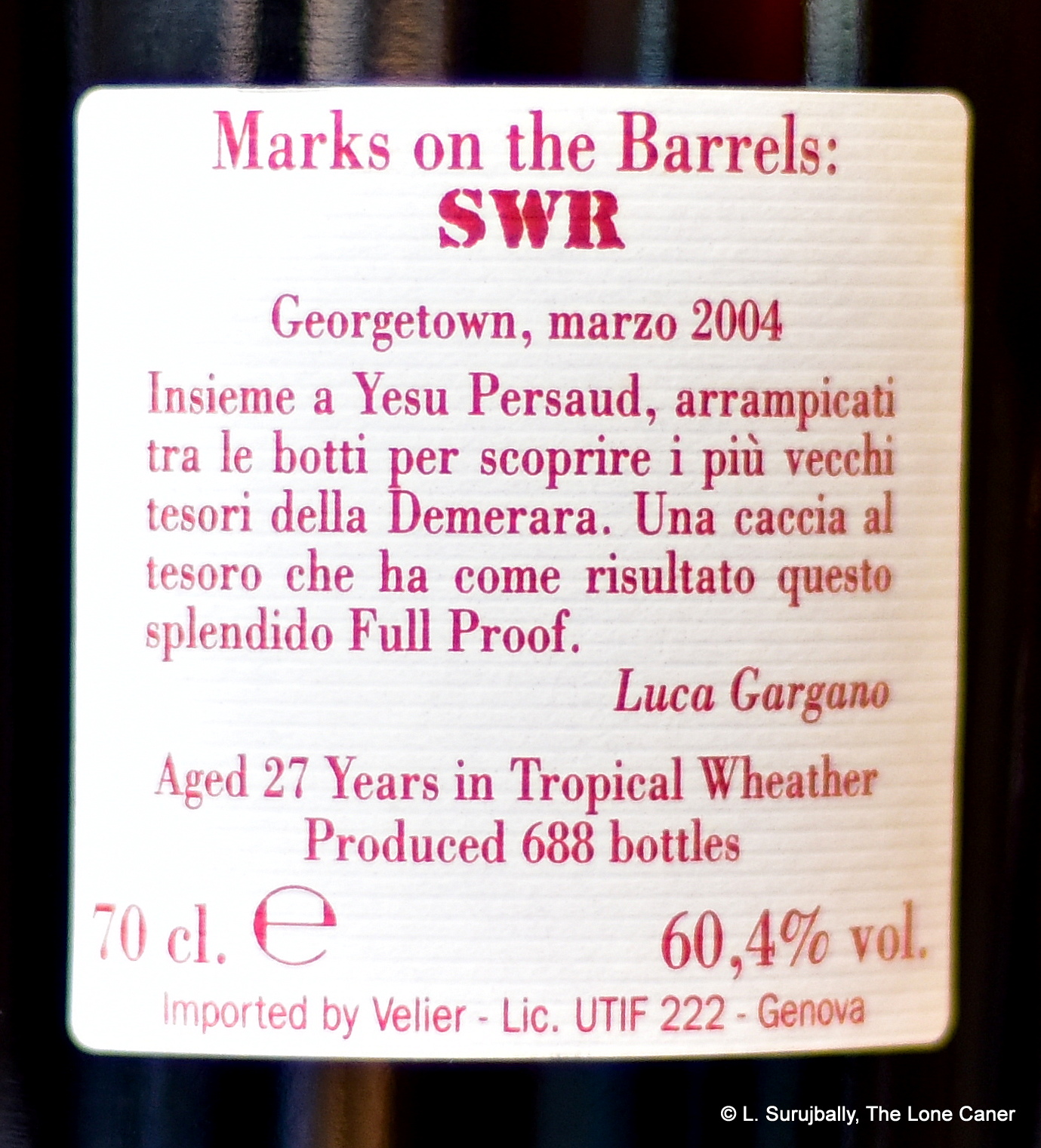 Although things at the Tasting were going faster than I was able to write (and listen), this was not a rum I wanted to be hurried with after waiting so long, and certainly it’s one with which to take one’s time. It unfolded gradually on the tongue, almost languorously and even at 60.4%, it was amazing how entirely under control it remained the entire time. Most of the tastes in the nose carried over, primarily anise, coffee and bitter chocolate, oranges, strong black tea, cumin, and that lentil soup / beef broth meatiness I remarked on earlier. But there were also more muted, subtler hints of papaya and fleshy fruits, aromatic tobacco, flambeed bananas and salty caramel. A rather dry note of over-roasted nuts came into play at the back end, a slight indeterminate bitterness (something like a manager who can never compliment your work without a closing criticism), but fortunately the muskier fruit and creamy notes ameliorated it for the most part. And while the finish was more a last bow on the stage than a true epilogue that added a few extra fillips of flavour, it was in no way disappointing, leaving me with a memory of coffee, nougat, salt caramel ice cream, fruits, raisins, licorice and light chocolate oranges.
Although things at the Tasting were going faster than I was able to write (and listen), this was not a rum I wanted to be hurried with after waiting so long, and certainly it’s one with which to take one’s time. It unfolded gradually on the tongue, almost languorously and even at 60.4%, it was amazing how entirely under control it remained the entire time. Most of the tastes in the nose carried over, primarily anise, coffee and bitter chocolate, oranges, strong black tea, cumin, and that lentil soup / beef broth meatiness I remarked on earlier. But there were also more muted, subtler hints of papaya and fleshy fruits, aromatic tobacco, flambeed bananas and salty caramel. A rather dry note of over-roasted nuts came into play at the back end, a slight indeterminate bitterness (something like a manager who can never compliment your work without a closing criticism), but fortunately the muskier fruit and creamy notes ameliorated it for the most part. And while the finish was more a last bow on the stage than a true epilogue that added a few extra fillips of flavour, it was in no way disappointing, leaving me with a memory of coffee, nougat, salt caramel ice cream, fruits, raisins, licorice and light chocolate oranges.
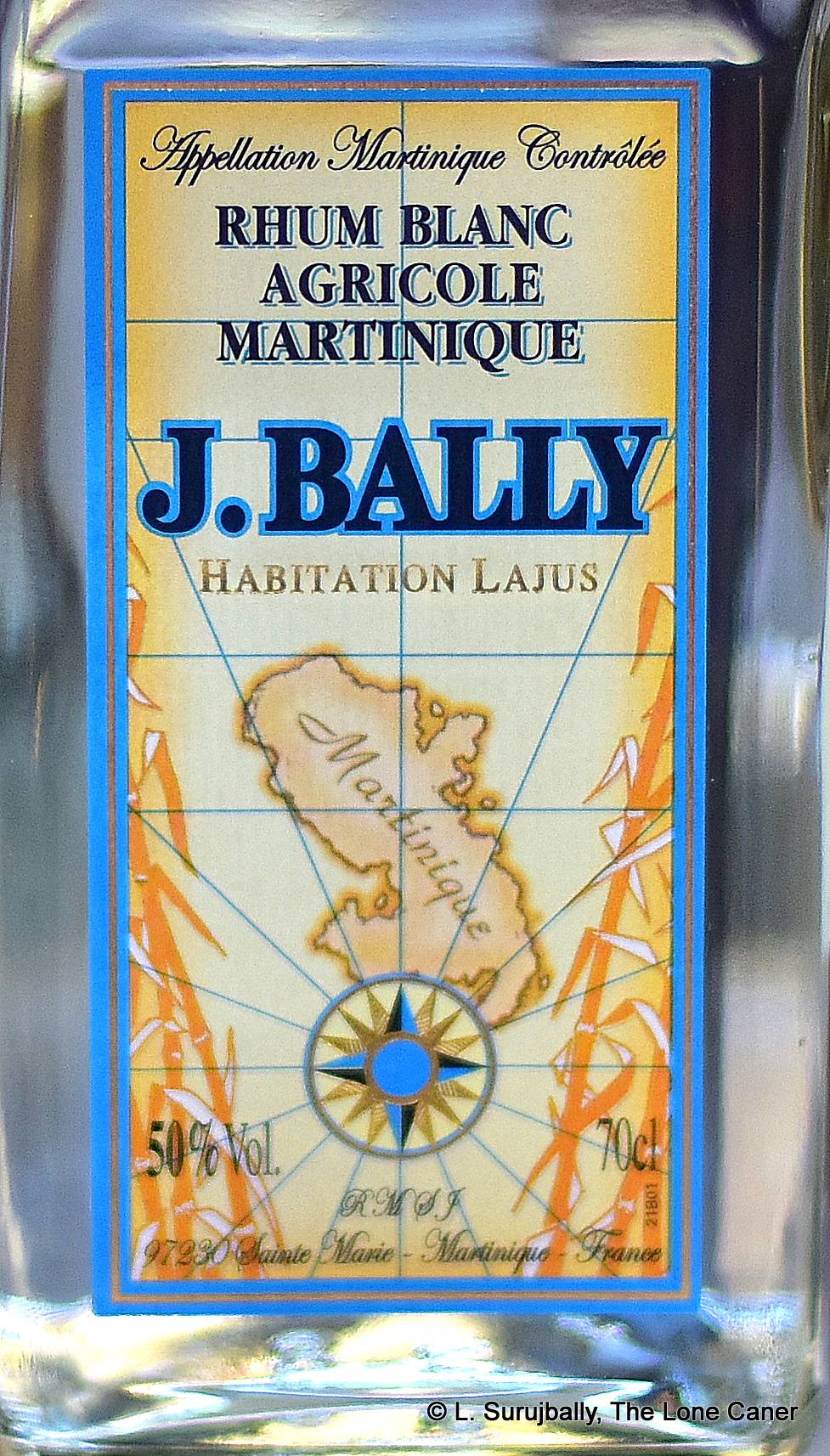 Well, that out of the way, let me walk you through the profile. Nose first: what was immediately evident is that it adhered to all the markers of a crisp agricole. It gave off of light grassy notes, apples gone off the slightest bit, watermelon, very light citrus and flowers. Then it sat back for some minutes, before surging forward with more: olives in brine, watermelon juice, sugar cane sap, peaches, tobacco and a sly hint of herbs like dill and cardamom.
Well, that out of the way, let me walk you through the profile. Nose first: what was immediately evident is that it adhered to all the markers of a crisp agricole. It gave off of light grassy notes, apples gone off the slightest bit, watermelon, very light citrus and flowers. Then it sat back for some minutes, before surging forward with more: olives in brine, watermelon juice, sugar cane sap, peaches, tobacco and a sly hint of herbs like dill and cardamom.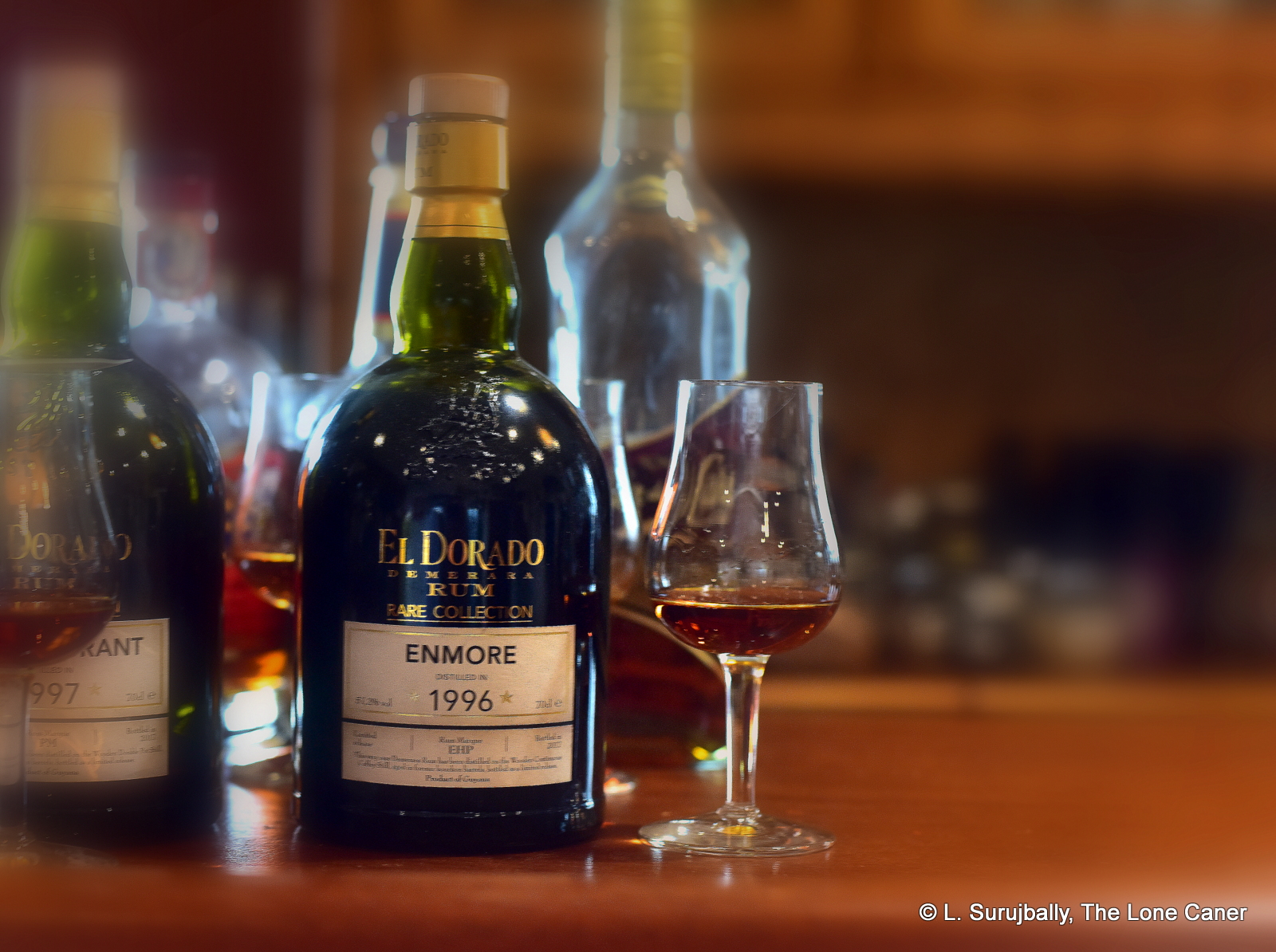
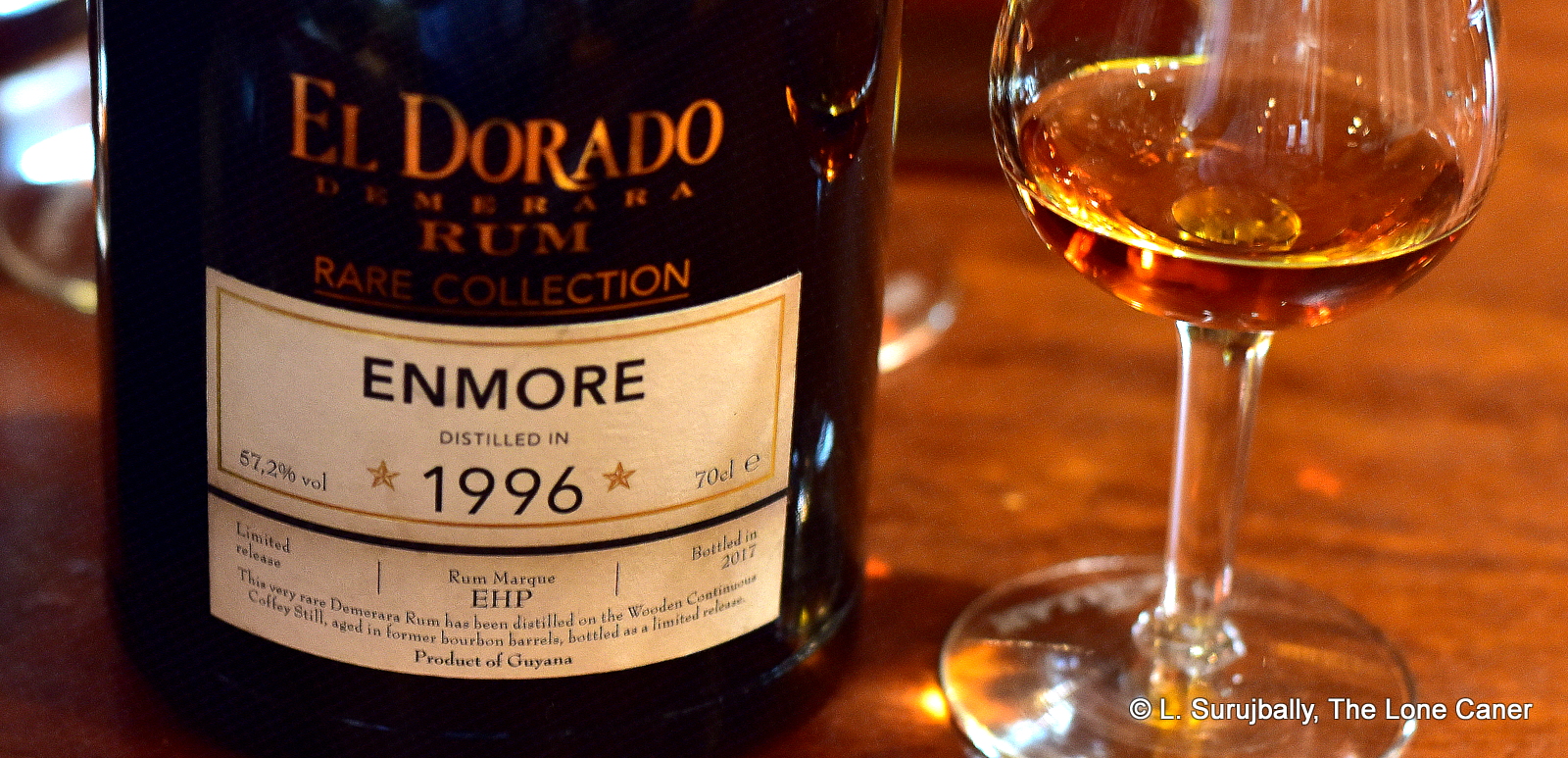

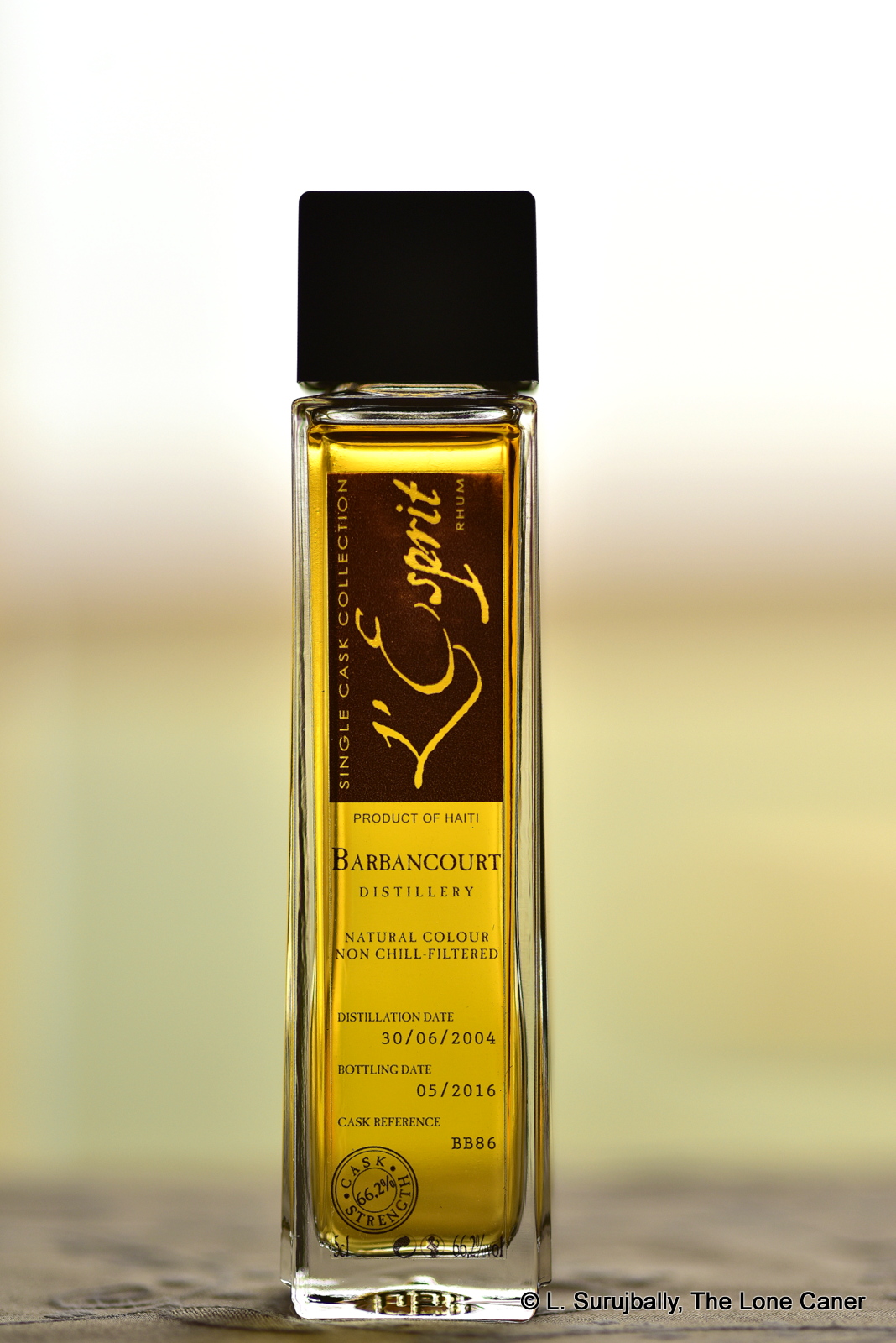 The bare statistics are brief and as follows: column still product, continentally aged; distilled 2004 and released in 2016 at a brobdingnagian 66.2% (its lesser proofed twin which is quite similar is bottled at 46% and 228 bottles were issued but about the full proof edition here, I’m not certain – less, for sure, maybe a hundred or so). Pale yellow in colour and a massive codpiece of a nose, deep and intense, which should not present as a surprise at all. It was quite aromatic as well – one could sense bananas, vanilla, prunes and fruit, with a nice counterpoint of citrus to set these off. Like many rums released at cask strength, it rewarded patience because after a while back-end smells of cream cheese, dark bread, brine, olives, nail polish, plastic bubble wrap (freshly popped), paint became much more evident, though fortunately without taking over entirely
The bare statistics are brief and as follows: column still product, continentally aged; distilled 2004 and released in 2016 at a brobdingnagian 66.2% (its lesser proofed twin which is quite similar is bottled at 46% and 228 bottles were issued but about the full proof edition here, I’m not certain – less, for sure, maybe a hundred or so). Pale yellow in colour and a massive codpiece of a nose, deep and intense, which should not present as a surprise at all. It was quite aromatic as well – one could sense bananas, vanilla, prunes and fruit, with a nice counterpoint of citrus to set these off. Like many rums released at cask strength, it rewarded patience because after a while back-end smells of cream cheese, dark bread, brine, olives, nail polish, plastic bubble wrap (freshly popped), paint became much more evident, though fortunately without taking over entirely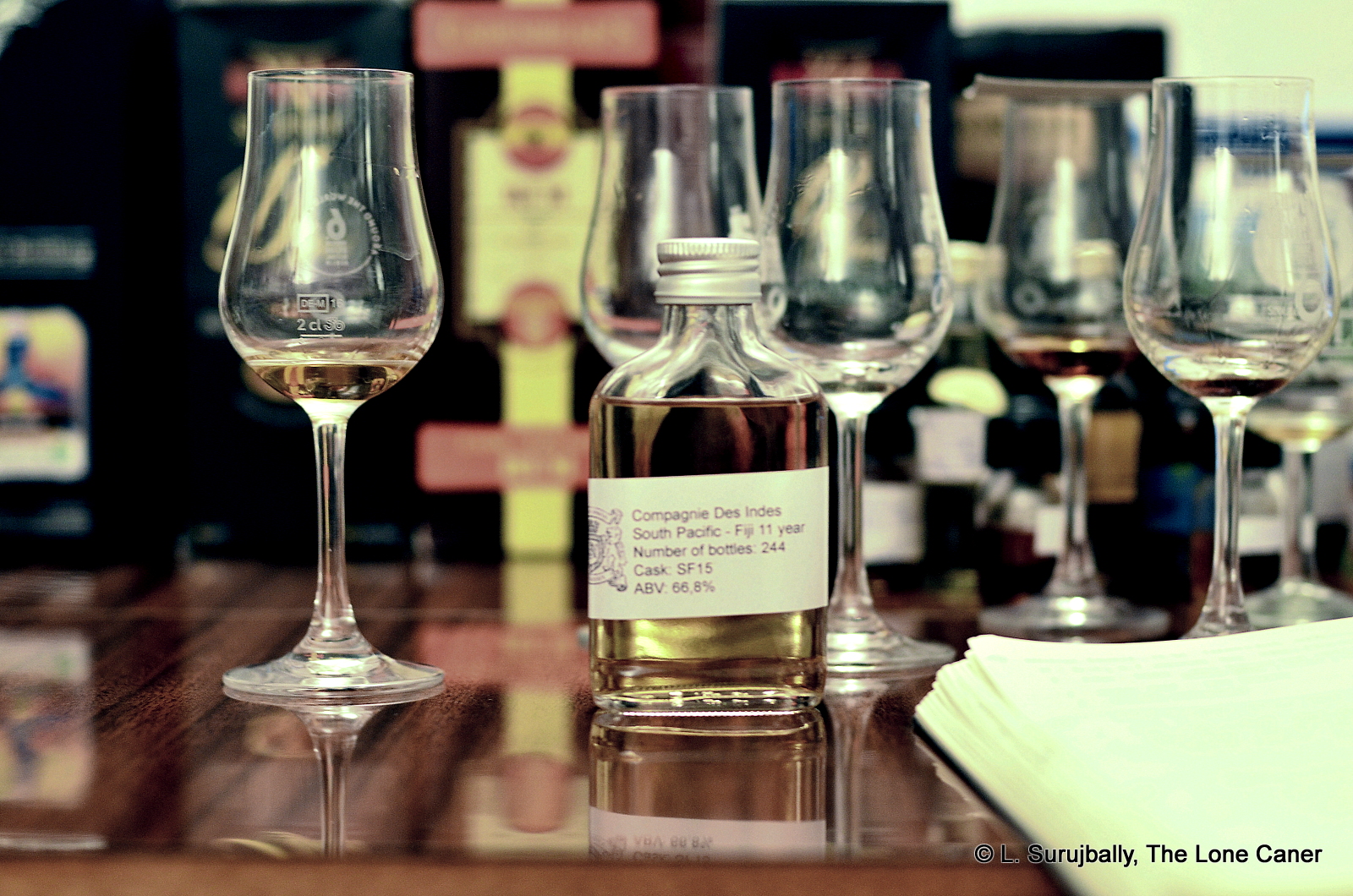
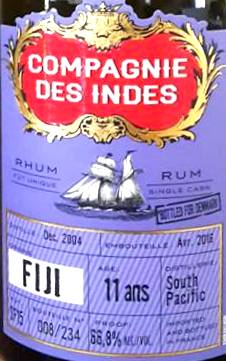 It was obvious after one tiny sniff, that not one percentage point of all that proofage was wasted and it was all hanging out there: approaching with caution was therefore recommended. I felt like I was inhaling a genetically enhanced rum worked over by a team of uber-geek scientists working in a buried government lab somewhere, who had evidently seen King Kong one too many times. I mean, okay, it wasn’t on par with the
It was obvious after one tiny sniff, that not one percentage point of all that proofage was wasted and it was all hanging out there: approaching with caution was therefore recommended. I felt like I was inhaling a genetically enhanced rum worked over by a team of uber-geek scientists working in a buried government lab somewhere, who had evidently seen King Kong one too many times. I mean, okay, it wasn’t on par with the 